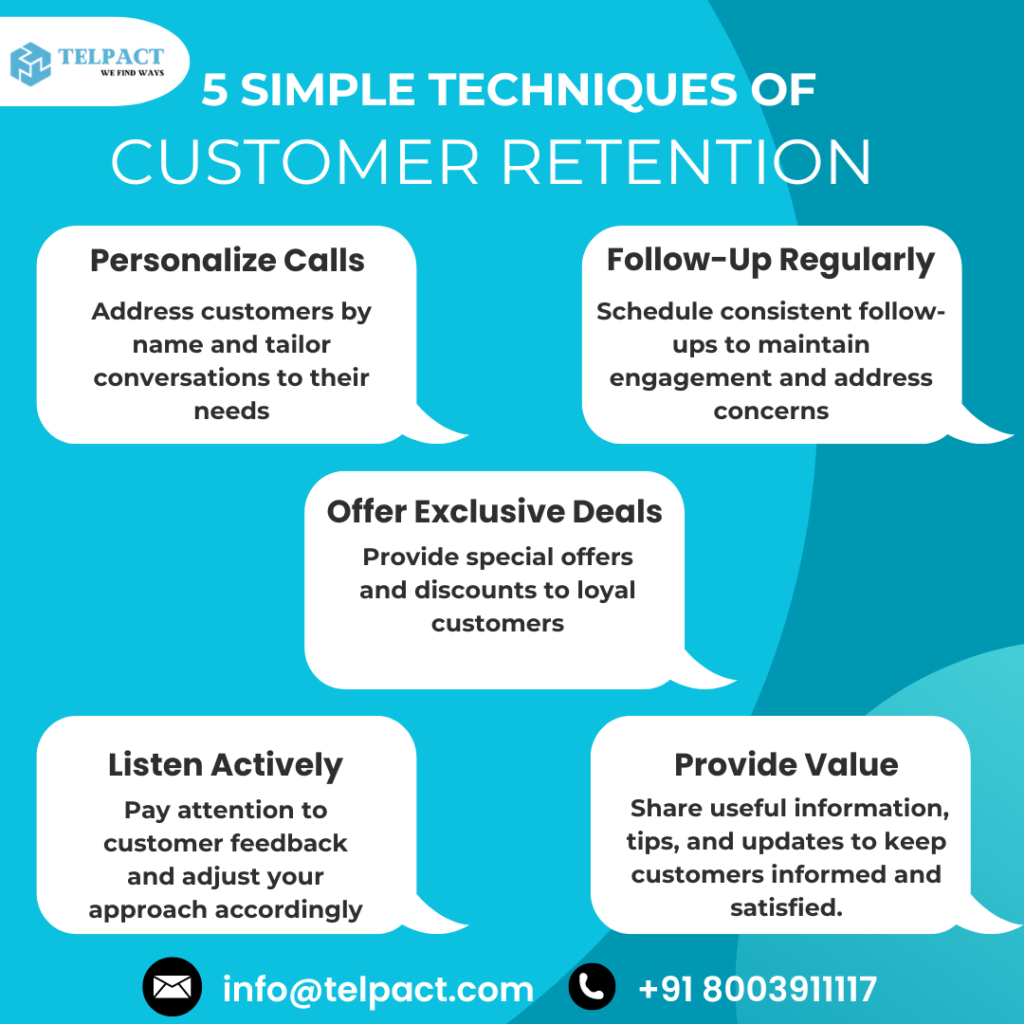Welcome to our latest blog post where we will explore the essential strategies for retain customers and keeping them coming back for more. Long-term success in today’s cutthroat business environment depends on maintaining current customers. So, buckle up as we dive into 5 simple yet effective ways you can retain customers and build lasting relationships with them!
The Importance of Retain Customers

Any successful firm relies heavily on its ability to retain customers. It’s not just about making a sale; it’s about building long-term relationships with your customers. When you retain customers, you’re not only increasing revenue, but also saving on acquisition costs.
Think about it – acquiring new customers can be costly and time-consuming. On the other hand, retaining existing customers is more cost-effective and can lead to repeat business and referrals.
By focusing on customer retention, you’re showing your customers that you value their loyalty. This can help differentiate your brand from competitors and create a strong sense of trust and loyalty among your customer base.
Retaining clients has become more crucial than ever in the cutthroat market of today, where consumers are spoiled for choice. With so many choices available, providing exceptional customer service and personalized experiences are key factors in keeping customers coming back for more.
The importance of retain customers cannot be overstated – it is essential for sustainable growth and success in any business endeavor.
Providing Excellent Customer Service
When it comes to retain customers, providing excellent customer service is key. It goes beyond just resolving issues; it’s about creating memorable experiences that keep customers coming back for more.
Customers appreciate quick responses and personalized interactions. Whether through live chat, email, or phone support, being attentive and helpful can go a long way in building trust and loyalty.
Empathy plays a significant role in customer service. Putting yourself in the customer’s shoes allows you to understand their needs better and provide tailored solutions that leave a lasting impression.
Consistency is crucial in delivering exceptional service. Every touchpoint with the customer should reflect your commitment to their satisfaction, from the first interaction to post-purchase follow-ups.
By prioritizing excellent customer service, businesses can not only retain existing customers but also attract new ones through positive word-of-mouth recommendations.
Creating a Loyalty Program
Creating a loyalty program for your customers is a strategic way to incentivize repeat business and foster long-term relationships. By offering exclusive rewards, discounts, or perks to loyal customers, you can show appreciation for their continued support.
When designing your loyalty program, consider what incentives would be most appealing to your target audience. Whether it’s points-based systems, tiered membership levels, or special access to new products/services, tailor the program to align with your customers’ preferences and buying habits.
Communicate the benefits of joining the loyalty program clearly and consistently across all touchpoints. Utilize email marketing, social media channels, and in-store signage to promote the value of being a part of the program.
Regularly evaluate and adjust your loyalty program based on customer feedback and engagement metrics. Stay agile in responding to changing market trends and consumer preferences to ensure that your loyalty program remains relevant and attractive over time.
Remember that a well-executed loyalty program not only encourages repeat purchases but also cultivates brand advocacy among satisfied customers. By showing genuine care for their loyalty through personalized rewards and experiences, you can create lasting connections that drive business growth organically.
Personalizing the Customer Experience
Personalizing the customer experience is crucial in retain customers and building brand loyalty. By tailoring your interactions to meet the individual needs and preferences of each customer, you can create a more meaningful connection that goes beyond just a transactional relationship.
One way to personalize the customer experience is by using their name in communications. Addressing customers by name shows that you value them as individuals and not just another number on your sales list. Additionally, you can use data analytics to track previous purchases or browsing history to recommend products or services that align with their interests.
Another effective strategy is to send personalized thank-you notes or follow-up emails after a purchase. This tiny act of kindness goes a long way toward making clients feel valued and appreciated.
You could also offer exclusive discounts or promotions based on their past behavior, showing them that you understand their preferences and are willing to reward their loyalty.
By personalizing the customer experience, you not only increase the chances of repeat business but also foster a sense of trust and satisfaction among your customer base. Remember, every interaction is an opportunity to make a lasting impression that keeps customers coming back for more!
Gathering and Utilizing Customer Feedback
Gathering and utilizing customer feedback is crucial for any business looking to retain customers. It provides valuable insights into what your customers are thinking and feeling about your products or services.
By actively seeking out feedback through surveys, reviews, or direct interactions, you can gain a deeper understanding of their needs and preferences.
Listening to your customers’ feedback shows that you value their opinions and are committed to improving their experience. Whether the feedback is positive or negative, it presents an opportunity for growth and refinement. Use this information to make necessary adjustments to better meet customer expectations.
Utilizing customer feedback effectively involves analyzing trends and patterns to identify areas for enhancement. Implementing changes based on this feedback demonstrates responsiveness and dedication to continuous improvement. Customers appreciate when they see their input being taken seriously.
Incorporating customer suggestions into your strategies can lead to increased satisfaction levels and strengthen loyalty. Engaging with customers in a meaningful way fosters trust and long-term relationships. Leveraging customer feedback can be a powerful tool in retaining satisfied clients who feel heard and valued by your brand.
Conclusion
Retain customers is crucial for the success and growth of any business. By providing excellent customer service, creating a loyalty program, personalizing the customer experience, and gathering feedback, businesses can build strong relationships with their customers and keep them coming back for more. Implementing these simple strategies will not only help retain customers but also drive long-term success and profitability. Remember, happy customers are loyal customers!
